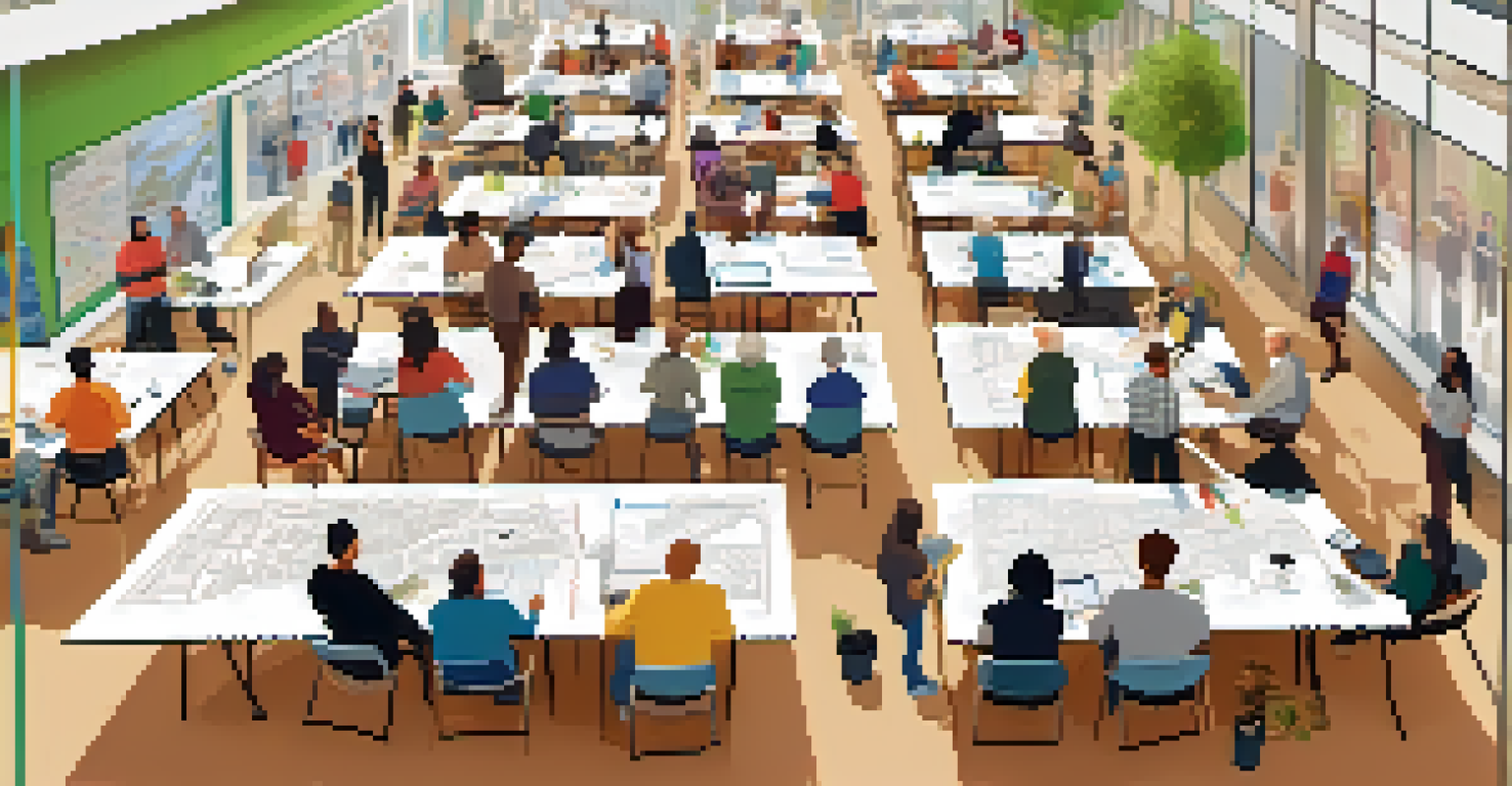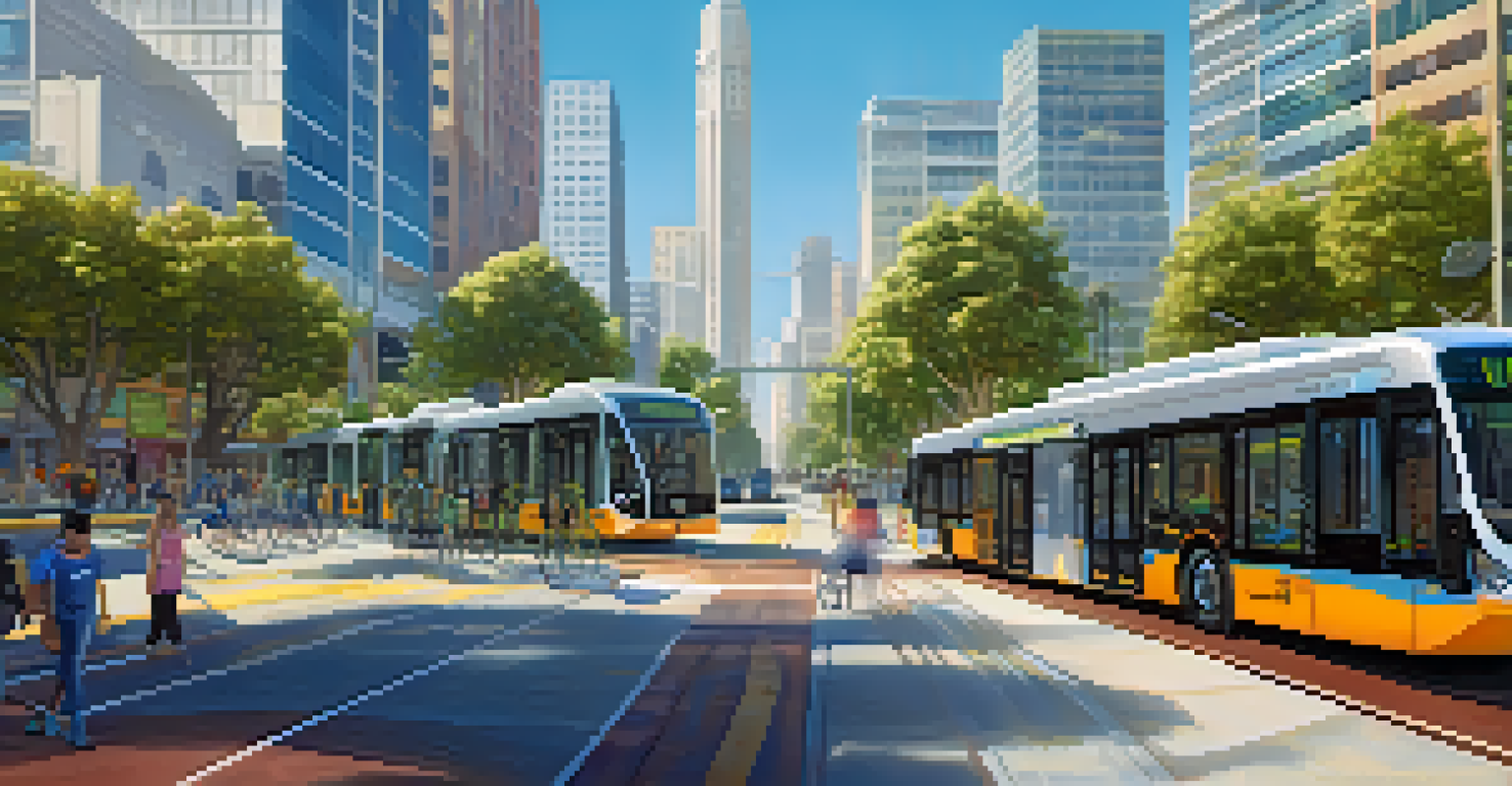Redwood City's Transportation Funding: Challenges and Solutions

Understanding Redwood City's Transportation Funding Landscape
Redwood City, like many urban areas, faces unique transportation challenges that require robust funding solutions. The city's transportation system is critical for supporting both residents and businesses, ensuring that people can move efficiently across the region. Understanding the current funding landscape is essential to address existing problems and future needs.
Transportation is the backbone of our communities, and adequate funding is essential to ensure it remains functional and accessible for everyone.
Transportation funding in Redwood City comes from various sources, including local taxes, state grants, and federal allocations. However, the distribution of these funds is often complicated and can lead to gaps in necessary projects and maintenance. It's crucial to have a clear grasp of where the money comes from and how it's allocated to identify potential shortfalls.
In recent years, the growing population and increased traffic have put additional pressure on the city's transportation infrastructure. This has sparked discussions among city leaders and residents about the need for innovative funding solutions to ensure that transportation remains a priority for the community.
Current Challenges in Transportation Funding
One of the primary challenges Redwood City faces is the increasing demand for transportation services coupled with limited funding resources. As the city grows, so does the need for expanded public transit options, improved roadways, and enhanced pedestrian facilities. This gap between demand and funding creates a pressing issue that must be addressed to keep the city moving.

Another challenge is the reliance on outdated funding mechanisms that may not adequately meet modern transportation needs. For instance, many funding sources are tied to gasoline taxes, which are decreasing as electric and hybrid vehicles become more prevalent. As the landscape of transportation changes, so too must the way we think about funding.
Funding Challenges in Transportation
Redwood City faces increasing transportation demands while relying on outdated funding sources that fail to meet modern needs.
Moreover, the competitive nature of grant applications can make securing necessary funds daunting. Redwood City often competes with neighboring areas for limited state and federal funding, which can lead to delays in project implementation and maintenance. This competition highlights the need for a more strategic approach to securing financial resources.
Engaging the Community in Transportation Solutions
Community engagement plays a vital role in identifying transportation funding priorities. When residents actively participate in discussions about their transportation needs, it helps city officials understand where to allocate resources effectively. This grassroots approach not only fosters trust but also ensures that funding decisions reflect the community's desires.
The strength of a community lies in its ability to come together and advocate for the resources it needs to thrive.
Public forums, surveys, and workshops are essential tools for gathering input from residents regarding their transportation experiences. By listening to their concerns and suggestions, city leaders can prioritize projects that matter most to the community, whether it’s improving bus routes or enhancing bike lanes. This collaborative effort can lead to more innovative funding solutions tailored to local needs.
Additionally, promoting awareness about transportation funding challenges can rally public support for necessary initiatives. When residents understand the financial constraints and the importance of investment in transportation, they may be more inclined to advocate for funding measures, such as bond measures or local taxes, that can bring about essential improvements.
Exploring Alternative Funding Sources
To address transportation funding challenges, Redwood City can explore alternative funding sources that go beyond traditional methods. For instance, public-private partnerships (PPPs) can be an effective way to leverage private investment for transportation projects. These partnerships can help fund infrastructure improvements while sharing the financial risk between the city and private entities.
Another innovative approach is the implementation of transportation impact fees for new developments. As new buildings and communities spring up, they inevitably increase traffic and demand for public services. By charging developers a fee that contributes to transportation infrastructure, the city can generate additional revenue to enhance the system.
Community Engagement is Key
Active participation from residents in transportation discussions helps city leaders prioritize funding for essential projects.
Lastly, pursuing grants specifically targeted at sustainable transportation initiatives can provide a significant boost to funding. Programs aimed at reducing carbon footprints or enhancing public transportation options often have dedicated funds available. By aligning projects with these objectives, Redwood City can tap into resources that support its long-term vision for transportation.
Impact of Technology on Transportation Funding
Technology is reshaping the way cities approach transportation funding and management. Smart transportation systems, which utilize data analytics and real-time information, can improve efficiency and reduce costs. By investing in these technologies, Redwood City can optimize its existing infrastructure, potentially decreasing the need for extensive new funding.
Moreover, mobile apps and digital platforms can enhance public engagement and streamline funding initiatives. For instance, apps that allow residents to report transportation issues or suggest improvements can provide valuable data that informs funding decisions. This democratization of information can empower the community and strengthen advocacy for necessary funding.
Additionally, integrating technology into public transportation can attract more riders, increasing fare revenue. By offering features like mobile ticketing or real-time tracking, the city can enhance the user experience and encourage more residents to utilize public transit. This not only helps generate additional funding but also supports broader sustainability goals.
Collaboration with Regional Partners
Collaboration with regional partners is essential for Redwood City to address its transportation funding challenges effectively. Working alongside neighboring cities, transportation agencies, and regional organizations can unlock additional resources and funding opportunities. These collaborations can lead to more comprehensive solutions that benefit the entire region.
For instance, joining forces on regional transit projects can create economies of scale that reduce costs for all involved. By pooling resources and expertise, cities can tackle larger initiatives that might be unattainable individually. This collective approach can lead to more effective use of funds and improved transportation options for all.
Exploring Innovative Funding Solutions
Alternative funding sources, such as public-private partnerships and transportation impact fees, can provide much-needed financial support for infrastructure improvements.
Furthermore, advocacy at the regional and state level can amplify Redwood City's voice in securing funding. When cities come together to present a united front on transportation issues, they can influence policy decisions and funding allocations more effectively. This collaboration not only strengthens individual city efforts but also builds a more sustainable transportation future for the entire region.
Looking Ahead: A Vision for Sustainable Transportation Funding
Looking ahead, Redwood City has the potential to develop a sustainable transportation funding model that meets the needs of its growing population. This vision involves integrating innovative funding sources, engaging the community, and leveraging technology to enhance the transportation experience. The city's commitment to sustainability will play a crucial role in shaping this future.
As city leaders and residents work together to address transportation challenges, it’s essential to keep an eye on long-term goals. Developing a comprehensive transportation plan that outlines priorities and funding strategies will help guide decision-making. This proactive approach can ensure that funding is not just reactive but strategically aligned with the community's vision.

Ultimately, the success of Redwood City's transportation funding efforts will depend on collaboration, creativity, and community involvement. By fostering a culture of innovation and inclusivity, the city can pave the way for a transportation system that is not only functional but also enhances the quality of life for all its residents.